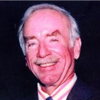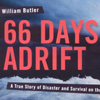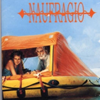A FLAT TIRE OFF CAPE HORN
New Chance, my North American 40, had plied Pacific Ocean waters from the Panama Canal to Magellan without a hitch. Our thousand mile traverse, the snow covered Andes a backdrop, of the spectacular fiords and glaciers of southern Chile, each mile more fabulous than the previous, built up to a crescendo which could now only be topped by the rounding of the legendary cape at the southern tip of South America.
March 4, 1995, caught us flying down the Straights of Magellan with a gusty westerly behind us as a terse log entry read: “like a rocket-ship”. To starboard lay aptly named Desolation Island. Charts in hand, we had already spent days in our search for the best way to round Cape Horn. If we left the protected waters of Magellan and Beagle Channel too early and headed offshore, we would expose ourselves to almost one hundred miles in a traditionally violent and unpredictable ocean. As evening approached we pulled into a small cove after Punta Angles, our pre-selected anchorage, dropped the hook but found no bottom. I then had sent Neill, the “White Hunter”, ashore in the dingy to secure a single line to a tree ashore, a procedure we followed religiously sparked by reports of myriads of disasters by others whose boat had drifted off while they slept. Once secure the crew continued to search for the optimum ‘round the Horn’ plan.
Dawn March 5, Sunday, found the crew reluctant to move out of their warm bunks. The heater at full blast kept cabin temperature at 51F. Water temperature was 40F. Though light rain fell, the crew raised sails and by six a.m. New Chance, with its winged genoa, gobbled up 8 plus Magellan miles each hour. All the nearby hills more than 500 feet high sported a blanket of light snow. Several small fishing boats passed during the day headed east. All hugged the northern shore as they chugged against the relentless current and winds. I had to wonder. How did Magellan, Slokum and all of those others manage to make westerly in unwieldy sailing craft against these mighty forces of nature? The two hundred miles we flew down Magellan made up for the four thousand miles where we had worked our way south down the western coast of South America against incessant head winds. This was surely pay-off time!
We left Magellan to enter Canal Barbara, which would take us south to Canal Beagle. Evening caught us in search of a suitable anchorage. All places we had picked so far had proven unacceptable, for they were either much too deep, unprotected from the winds, or too small. And we did have to stop, as we had found not one navigational aide. When my son Jim called out from the bow that we had a fishing boat on the bow I asked him to keep an eye on it. He surely must be headed for a cove. We’d follow him in to wherever he was headed. After we had motored up a narrow channel with cliffs on both sides for almost fifteen minutes we turned a corner to find a small cove with two dozen fishing boats rafted in groups of 6 to 8. Many beckoned for us to raft with them. We chose a boat to the far right side, handed them our lines, and became instant friends. Obviously, an American flag racing boat was not their usual fare, and their questions were endless. Most lived in Punta Arenas.
We traded packs of cigarettes we had purchased for this purpose back at our starting point in Puerto Rico eight months past for a pail of snow crabs, a pallet with 6 partially smoked snook, and a pail full of sea urchins. Jim put water to boil while Chuck Adams and Neill Martin cut open the sea urchins to remove their 7 egg sacks. These sacks, on a bed of thinly sliced onion and washed with lime juice, disappeared as fast as they were prepared. When the snow crabs landed on the cockpit table it was all hands for themselves. Stuffed with the catch of the day, the crew passed out early.
Early the folowing morning, we bid our farewells, cast off, then brought New Chance back out into the main channel. Within an hour we found ourselves in the open ocean. Westerly squalls with gusts of 35 to 40 knots built humongous breaking seas quickly convinced us that we should cut our exposure to the open ocean to a minimum in our quest to round the Cape. Seven miles later we scurried into the calmer waters of Canal Bencock where we continued to zoom along at close to 9 knots though heavily reefed. This narrow channel led us to our stop for the night, Puerto Fanny. A line ashore and the forty pound Danforth set in a bed of kelp 60 feet down, plus smoked snook heated in the oven led to another great nights sleep for all even though fierce frigid gusts blew continuously from all directions.
Tuesday March 7th was again rainy and windy. A dozen waterfalls spurted down thousand foot high cliffs surrounding our little cove. The hunter rowed to shore to untie the line and all three mates took turns hauling up what seemed like a ton of kelp wrapped around the anchor. By noon we passed Garibaldi Glacier and talked to the sailing vessel “Pelagic”, anchored some 15 miles inside, too far in to visit. Canal Bencock led us into Beagle Channel and to Puerto Williams, the southernmost town in the world at 55 degrees. This rustic town with its wooden sidewalks reminded me of the old wild west cow towns depicted by Hollywood. Their Yacht Club is a ship that conveniently sank near shore. A neatly maintained lounge and a secure mooring for New Chance was as close to heaven as we could hope for.
With fuel, groceries and water loaded, with official authorization to round Cape Horn provided by the Chilean Navy, we cast off at noon on March 8. We ran down Beagle in a light breeze, rounded the end of Navarino Island??, and pointed the bow south. By midnight, off Isla Recinet, the wind had picked up to 35 knots. At two a.m. we lowered sails to motor into one of the four anchorages OK’d by the Navy, now but a mile to the west. Twenty minutes later, when the motor stopped, winds out of the west were gusting to 45 knots. We unfurled a bit of main and some staysail to try to maintain our position. The night was impossibly dark. I knew we had rocks a half mile to the north and about the same to the south. Thankfully, the water was clear to the east. Jim and Hunter worked the helm and the sails while Chuck and I wrestled with Bertha, my Perkins 4.108. In the turmoil brought about by 10-foot seas we bled the engine, got it to run for a few minutes, then it stopped. After three tries, with diesel fuel now covering the cabin sole, I went to my oft-used fail-safe system. I got Jim to hand down a 5 gallon fuel jug, installed new hose out from the jug into the engine, rerouted the return to the jug, and got the engine to run and stay running.
Back on deck at 4 a.m. I glanced at the anemometer. Wind was steady at 40 knots with gusts of 55 knots. I had no visual bearings anywhere. I set what I considered a safe course and went below to check the SATNAV. I recorded a fix every 10 minutes. An hour later, we had not gained 50 feet. On deck at dawn, I spotted Cape Horn, six miles to the south. Bertha at her full output, and the much reduced sail area set, failed to produce any headway. The wind had settled down to near 30 knots out of the west. Low dense icy clouds scudded by. The Cape beckoned.
At 8 in the morning, I gave the order to head for the Cape. Just as we rounded Isla ????? and hit open water, a new gale blew in with gusts to 60 knots. Two 20 foot breakers washed right over 13 ton New Chance dragging it down wind, mast down. Too much, I jibed and headed back into the lee of the island. The gale passed. With the water behind the island much quieter, Cape Horn once again caught my attention. I rationalized: I had just sailed more than 8000 miles from San Juan and had less than 5 miles to go to reach my objective. Hell, let’s give it another shot.
Again we headed south. Again seas hammered us. Again we turned back. And yet again I decided to give it another shot. After our third try, it became obvious that it was not to be. To continue would put the lives of us all on the line. I jibed one last time, told my exhausted crew to sack out, set the bow north, and tied myself securely with ropes to all of the cockpit winches. New squalls spewed gale force winds on a half hour timetable. Waves swept over New Chance as if wasn’t even there. Chuck once peeked out of the cabin to exclaim, “Hey skip, where’d the ice on your beard come from?” Hours passed as we logged well over 6 knots in our escape from hell.
By five in the afternoon winds were once again a bearable 25 knots. The sun warmed us ever so much. The crew came on deck and I dropped below to place a call on the radio. I tuned my single side band radio to an AT&T frequency on the 15 meter band and placed my call to WOM in Ft. Lauderdale, convinced it was but one more ‘crazy Bill Butler idea’. I had over the years tried to call them from points much closer and had failed. Here we ae now at the end of the world. After my second call, I heard the hum of a tuner and got my reply, “New Chance, WOM. What is your position?” He rotated his antenna in our direction, asked how I copied, which I reported as perfect, and then asked for the number to call. Within seconds, my wife Lirio was on the line. After the usual hello’s I asked her how was everything at home in Puerto Rico to which she popped back with, “Oh, dear. I have a terrible problem! My car has a flat tire. What should I do?”
© WILLIAM BUTLER 2004


